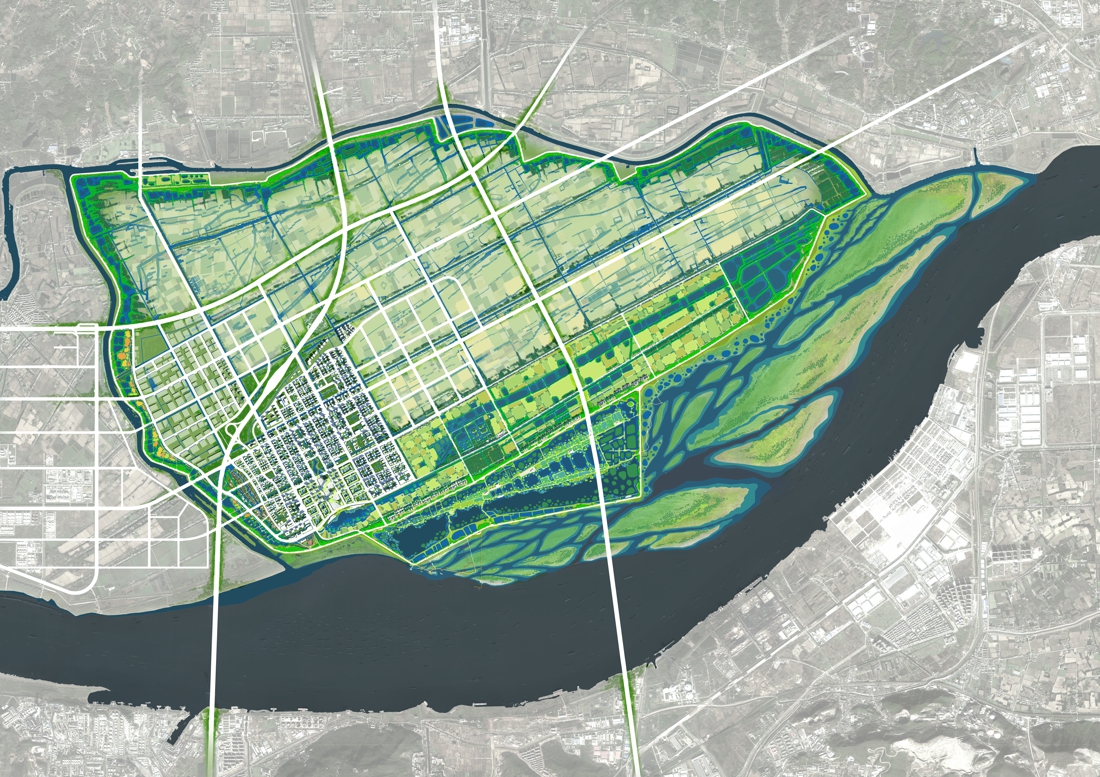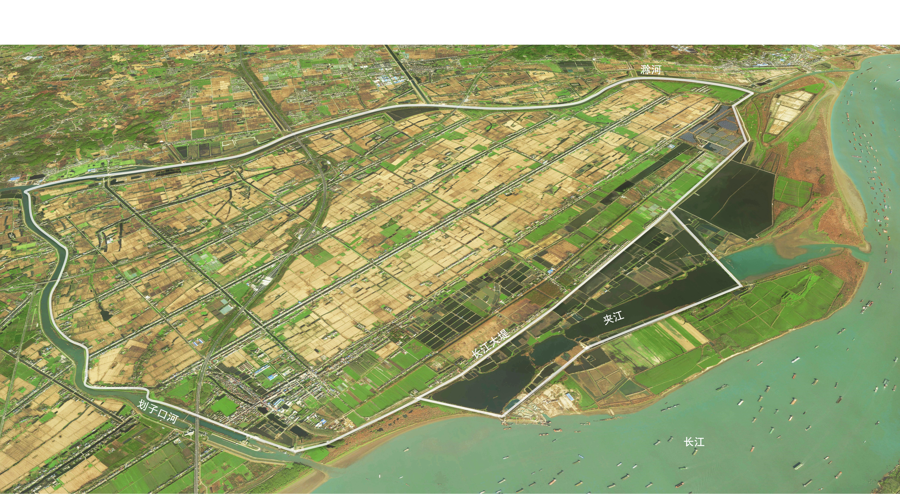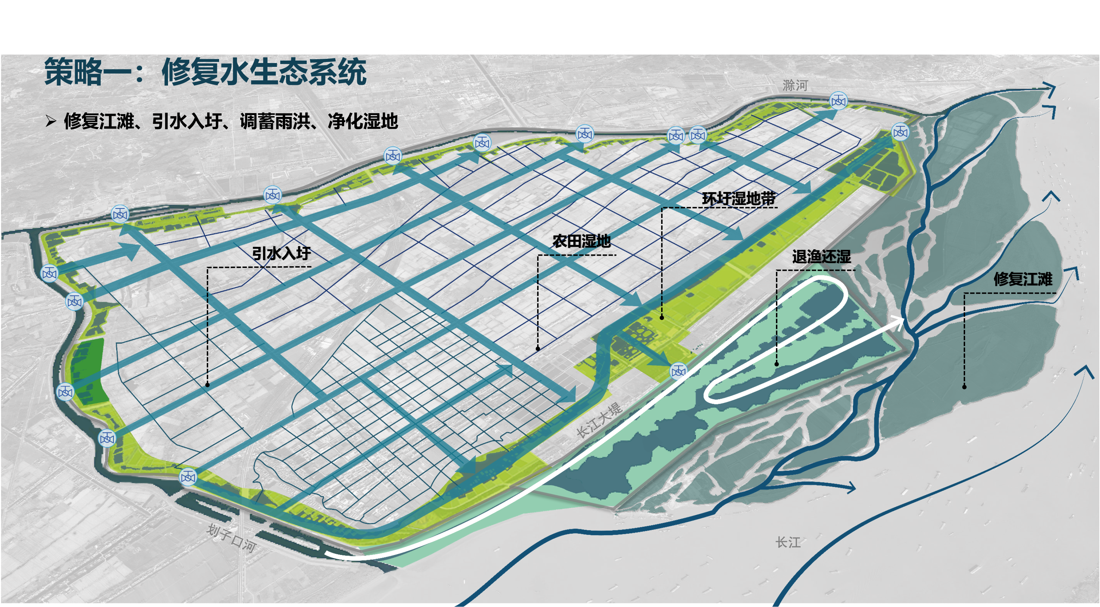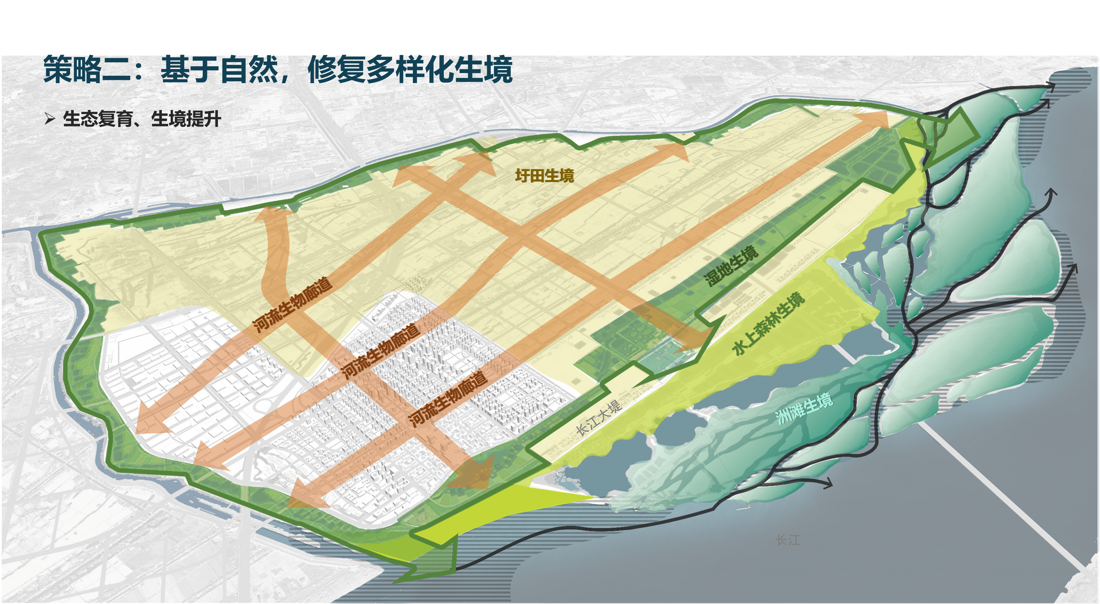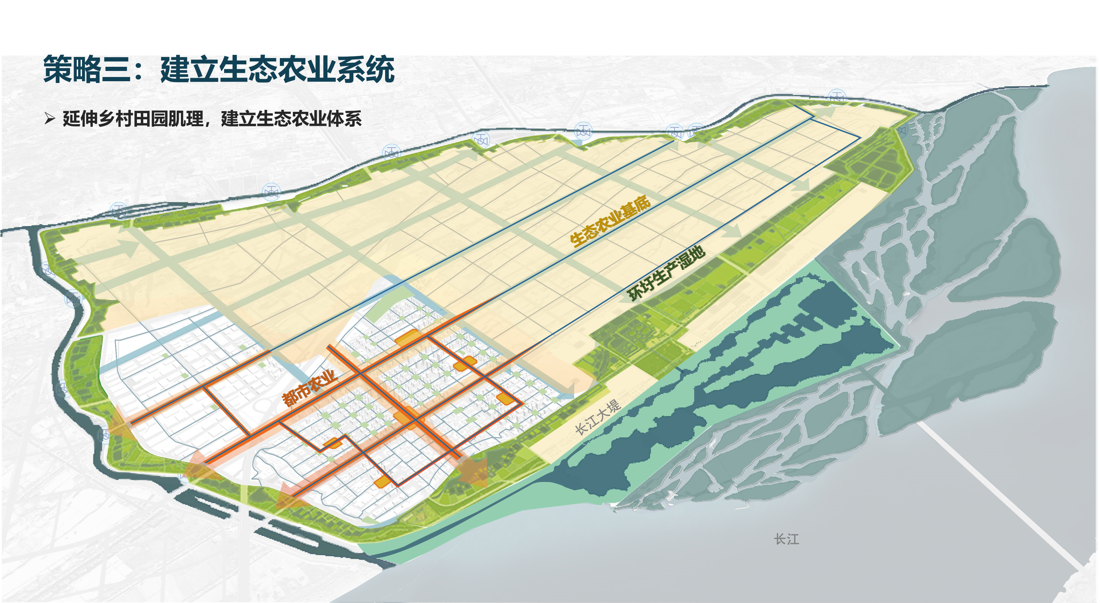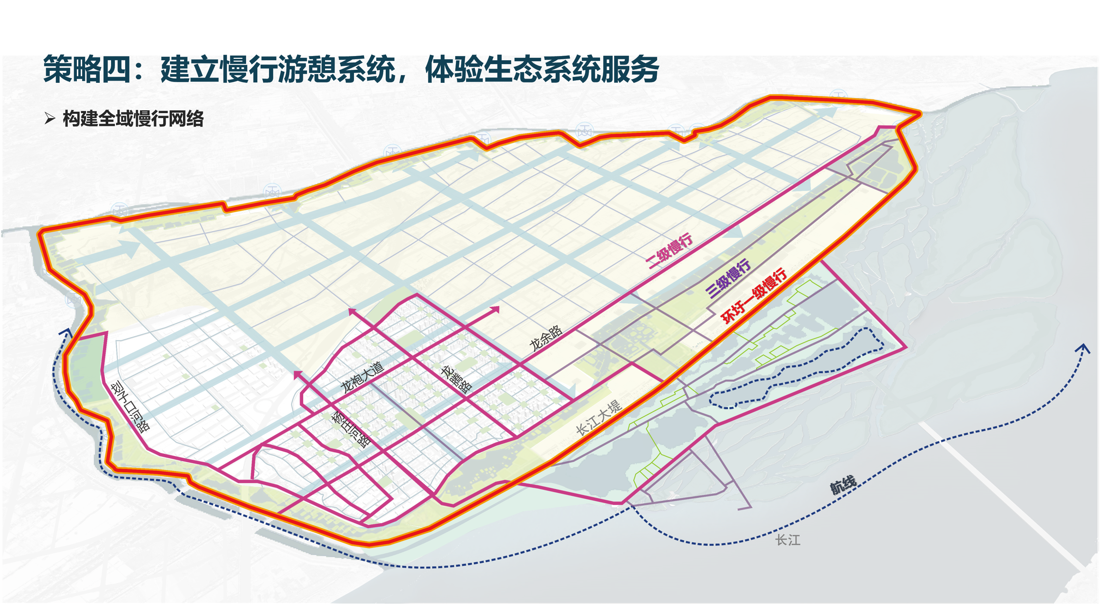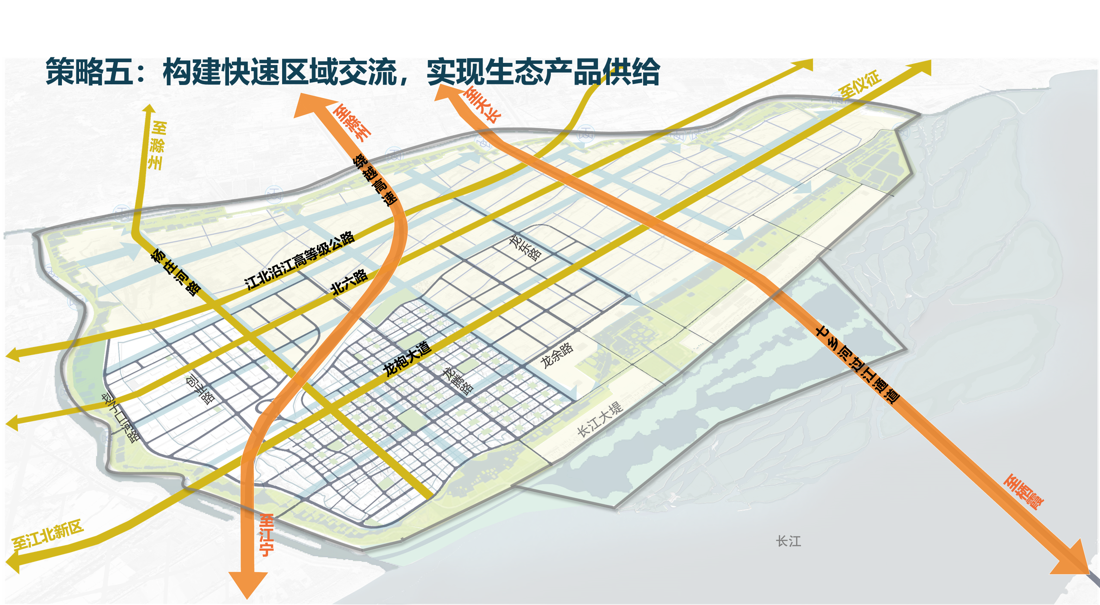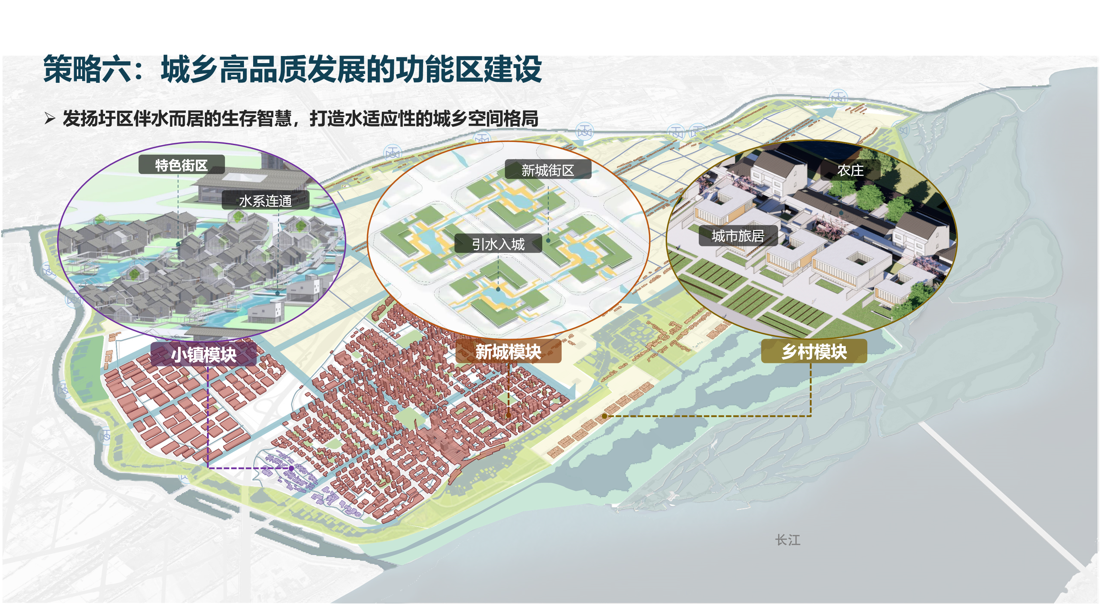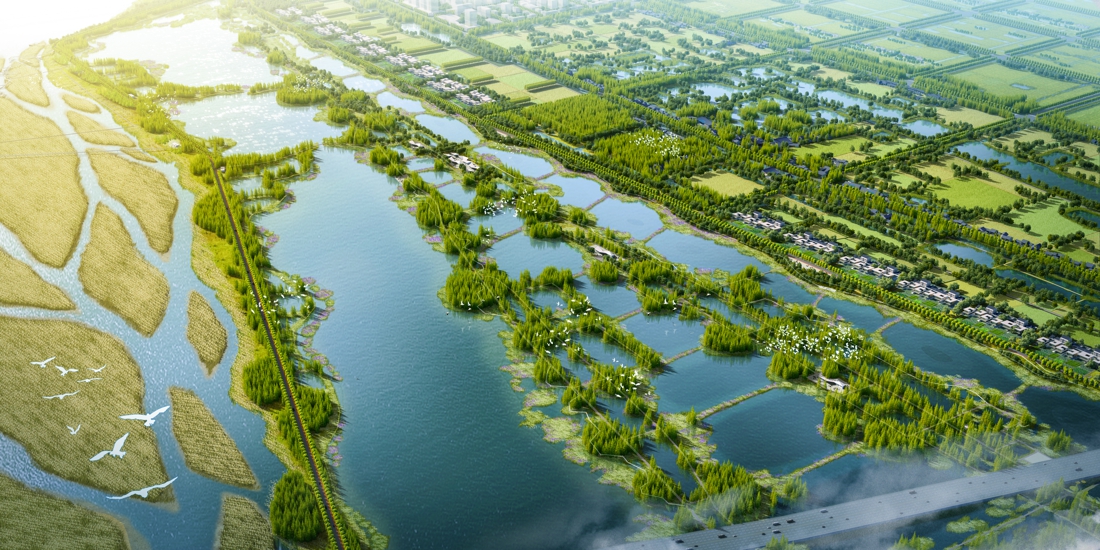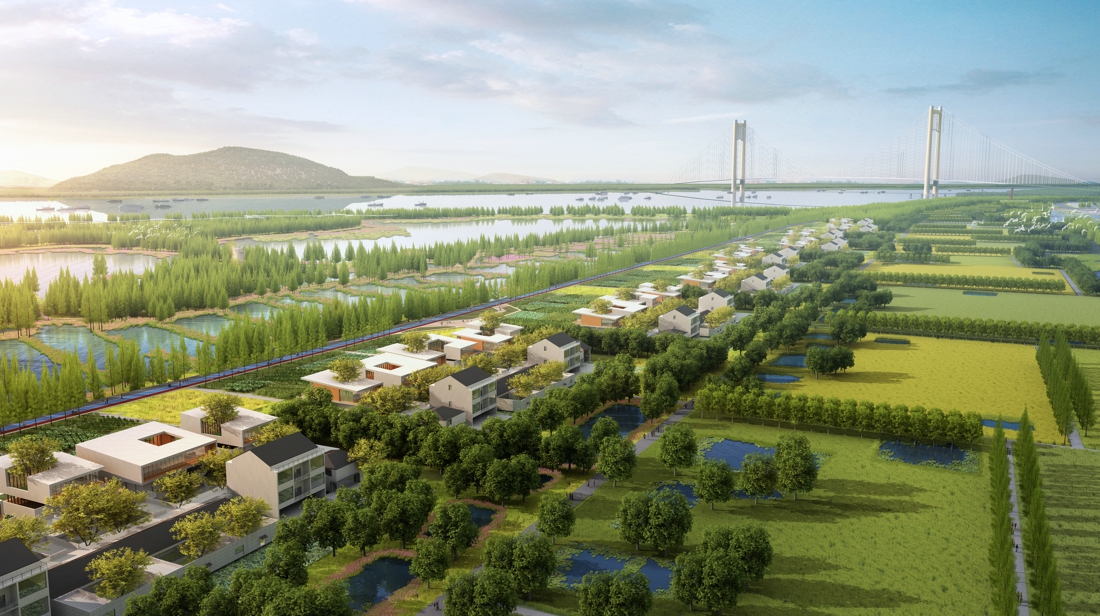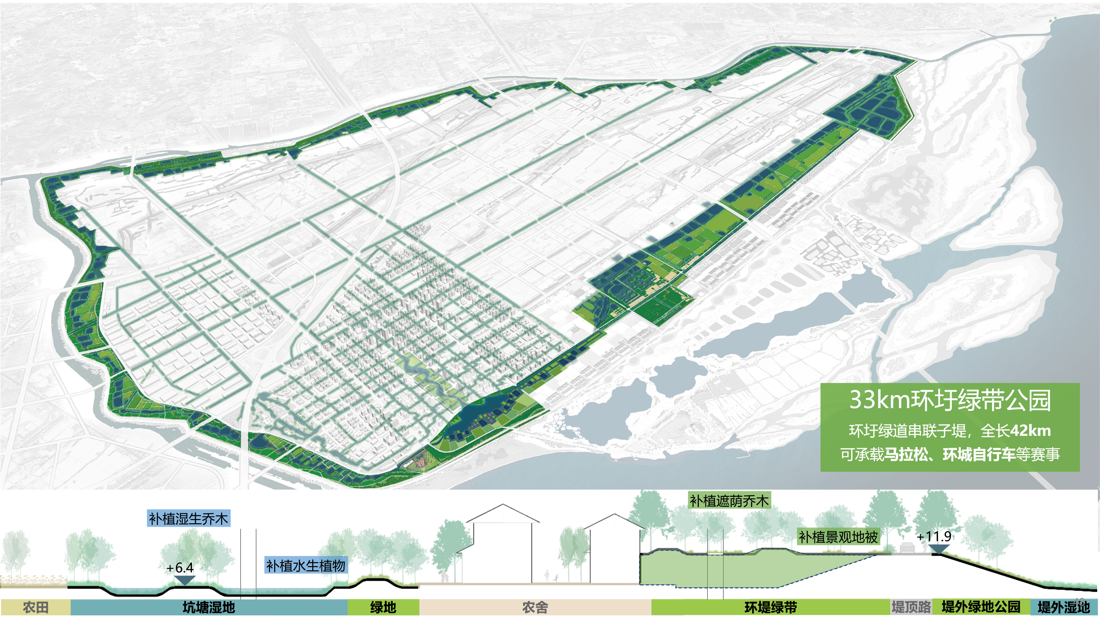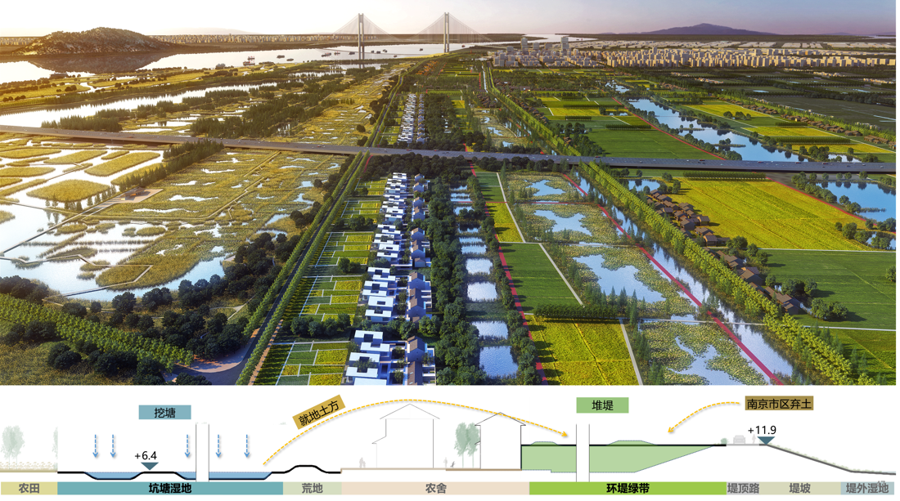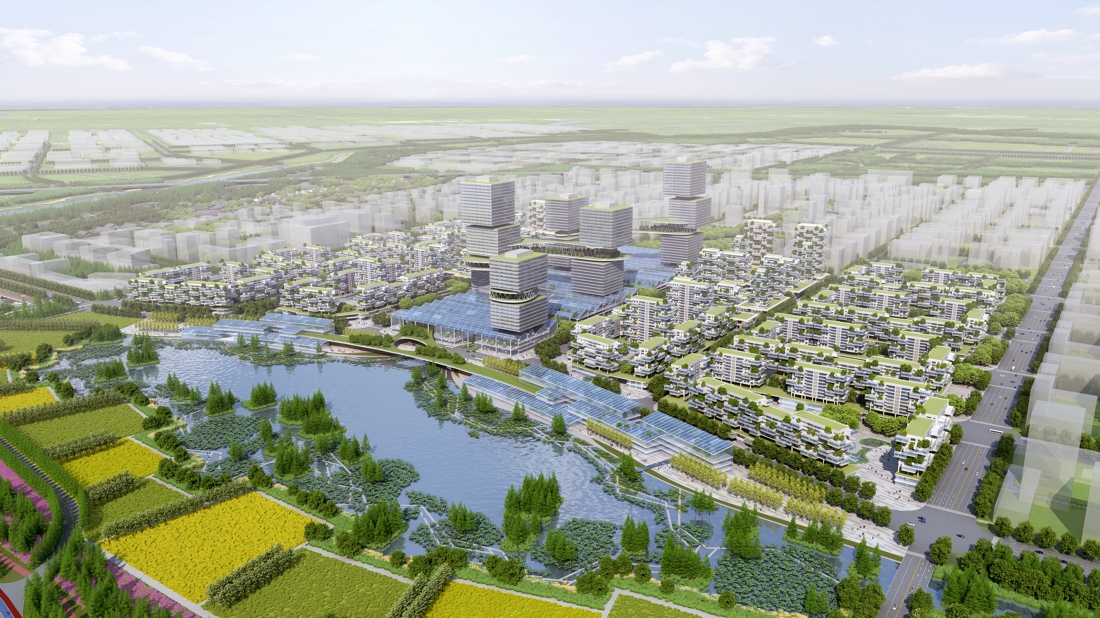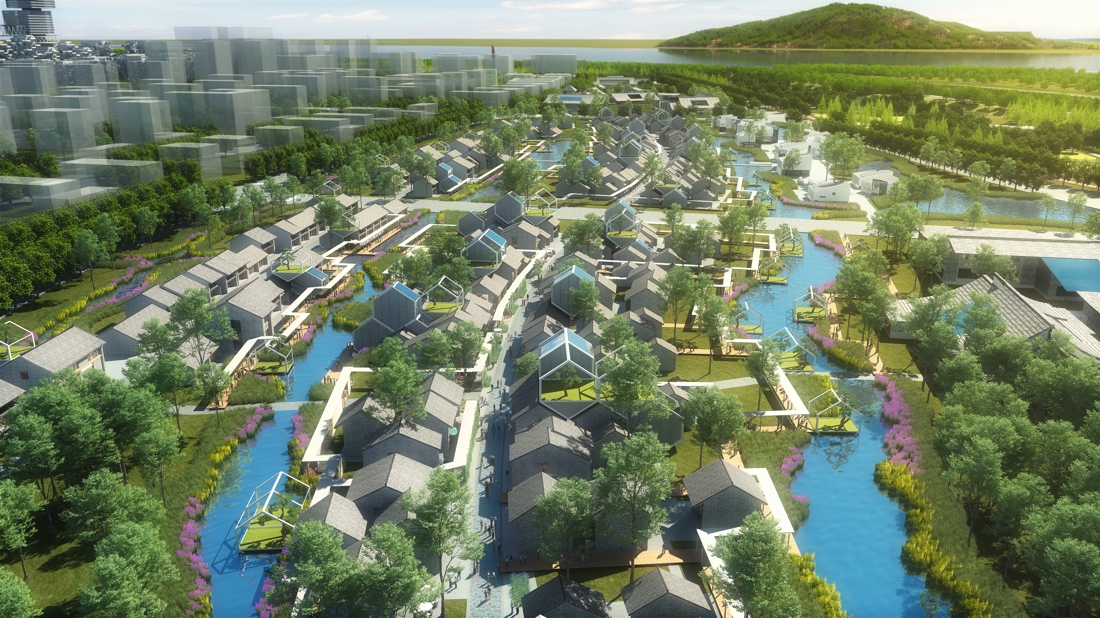Nanjing Liuhe District Longpao New Area Urban Design
Project Information
- Project Location:
- China Nanjing, Jiangsu
- Project Scale:
- 38.2km2
- Design Time:
- 2021
Project Profile
1. Project Statement
The Yangtze River, China's mother river, has created half of China's fertile fields and warm homeland. It is also a mirror of the relationship between man and nature of the Chinese nation, and has been at the forefront of the struggle between man and water for thousands of years. From the agricultural era of transitional reclamation and competition between people and water for land, to the industrial era of shoreline hardening and engineering encroachment, mankind and the Yangtze River have long been in a dangerous stalemate. Under the concept of ecological civilization, the Yangtze River will have a historic opportunity for ecological restoration and high-quality development.
Rapid urbanization requires the opportunity to gain security and resilience by reorganizing the mountains and rivers. The contribution of agriculture to the national economy is declining, agriculture needs ecological restoration to regain quality and trust, and farmland should shoulder the role of national resilience. The people's aspiration for a better life eagerly calls for productive and beautiful river landscapes and abundant and sustainable green mountains. Under this opportunity of the times, how can the Yangtze River, which has entered the era of ecological civilization, achieve high-quality development? What kind of city-water relationship is called for?
Longpao New City, Nanjing's undeveloped riverside emerald, sits on the largest riverfront wetland in the middle and lower reaches of the Yangtze River. It is a typical Yangtze River polder, and the hard shoreline cuts off the new city's connection to the river. Faced with the pressure of new city development, Longpao New City needs to explore a new city-water relationship by improving the ecological service system and exploring a way out and making a model for the high-quality development of the same type of new city along the Yangtze River.
2. Objective and Challenge
The Yangtze River Ecological Corridor (definition: the largest floodplain in history) is a mirror of the Chinese people's relationship with nature and a front line of resistance. After thousands of years of resistance, it is currently in a fragile and dangerous stalemate that lacks resilience. It is reflected in.
First, the long-term fragile balance: the corridor transition reclamation, dense population distribution, narrow solidified Yangtze River waterway, placing the majority of urban, rural and agricultural land under the hanging river; human-water relations are in a state of stalemate confrontation, resulting in the fragility and deterioration of the natural ecology, people's lives and property security at high risk and huge risk.
Second, the huge gray rhinoceros’ risk: global climate change, uncertain rainfall and flood risk, questioning the sustainability of the engineering flood control approach, calling for the ecological strategy of the resilient Yangtze River.
Under the concept of ecological civilization, the Yangtze River ecological corridor ushers into a historic opportunity for ecological restoration and protection with high quality on. It is mainly reflected in three aspects.
First, urbanization, unprecedented in 5,000 years, has created conditions for the migration and layout of China's population, and the opportunity to gain security and resilience through reorganization of mountains and rivers is fleeting.
Second, the extremely rapid decline in the contribution of agriculture to the national economy and the need for ecological restoration of farmland have led to an unprecedented increase in the social resilience of Chinese society to cope with floods. The cost of exchanging agricultural production space for ecological resilience is insignificant.
Third, the people's demand for a better life urgently requires blue and green, fresh and bright, productive and beautiful river landscapes, and abundant ecosystem services. This is the true meaning of green water and green mountain is the silver mountain of gold.
The design goal of this project is to explore the development model of ecological protection, high-quality development and urban-rural integration of the Yangtze River.
3. Design Strategy
1) Using the wisdom of the ancestors to divert water into the polder to restore the water ecosystem: build a sponge system for storage and drainage to reduce the pressure of waterlogging; replenish the water for replacement, purify the living water, and reduce pollution risks; finally form a city-farmland -Water ecological infrastructure in the entire wet zone around the polder.
2) Restoring diversified habitats based on nature: The continuous wetland and river beaches have blocked the ecological connection between the inside and outside of the levee due to the intervention of flood control projects, facing multiple problems such as wetland shrinking, excessive reclamation, decline in biodiversity, and water pollution. We dredge the diversion and use the power of nature to restore the river beach. The flowing river water will create a water forest suitable for birds. In the sub-dikes, a complete purification wetland system will be constructed to purify the water at different levels to improve the water ecological environment and create diverse habitats. Improve biodiversity.
3) Establish an ecological agricultural system: relying on the water and green network, extend the texture of the rural polder, penetrate into the city fingers, and achieve the integration of urban and rural areas. Combining traditional agricultural wisdom to create an ecological production method with no waste and recycling. According to different current natural conditions, an agricultural self-circulation system is established, and the whole site is divided into four circulation systems: fish and vegetable circulation system, rice fish/shrimp circulation system, mulberry fish pond circulation system, grain and vegetable intercropping circulation system, ecological food chain system. Each system is interconnected and cycled, forming a "comprehensive, diverse, efficient, and continuous" ecological cycle.
4) Construct a slow-moving recreational system and experience ecosystem services: the gray hard levee cuts off the relationship between water and water in the city, blocking the line of sight and being inaccessible. We fill and dig on the spot to create a park on the top of the embankment. Lovers who like boating, cycling, or jogging can walk on the green road, condescending and admire the beautiful scenery inside and outside the embankment. Take the slow-moving experience corridor as a clue and connect the characteristic nodes of the whole region to create a global and immersive park city pattern.
5) Construction of functional areas for high-quality urban and rural development: Carry forward the survival wisdom of living with water in polder areas, and create a water-adaptable urban and rural spatial pattern. What kind of life experience should a suburban new city in the ecological age bring to people? It is the exploration and practice of the Yangtze River Resilient Yingcheng development model: the grid-like green water system not only regulates rain and flood, but also provides a comfortable micro-environment; small streets and dense roads meet the needs of convenient and efficient traffic. In the core area of the city, we advocate a new ecological leisure office model: a three-dimensional farm around the core water body, which integrates production, leisure and office, and transforms the city into a real green forest. It will build an ecological circulation system that makes full use of green energy. Based on Nanjing's climatic conditions and human comfort, it will provide an open office with natural ventilation for up to 5 months without intense heat in summer and severe cold in winter. It will fully meet the leisure needs of the citizens, with the fragrance of melons and fruits, and the shallow bottom of the fish. The central canal will become a unique way of passing through the water city. This is a smart response to the post-epidemic era and the dual-carbon era, and it is also a return to humane urban care.
Aiming at the problems of one thousand towns in tourist towns, unrecognizable heritage, and low-end industries, we put forward the development concept of integrating the new and the old, activating the space with art, and leading the industry by creativity to create a unique water town market, Tangyi, Jiangnan. This is a deductive field where the local culture and the trend are merged. Come to the Tangyi Theater to watch a Hongshan play, order a drawer of crab noodle soup at the Riverside Pavilion, and chase the jasmine melody around the beams at the end of the alley, as if you were a spring rain, and melted into this leisurely ink painting.
The countryside is the best carrier for urban people to yearn for a better sojourn life. With the support of the ecological infrastructure, the transfer payments of urban residents and the income generation of villagers will form a benign closed loop of the green economy, and the revitalization of the countryside will be realized. In the Yangtze River community, due to the barrier of the embankment, it is close to the river but not to the river. We have improved the spatial relationship between the village and Dati. The riverside provides an excellent habitat for urban residents, and the back of the river is the residence of the villagers, the fish ponds, and the flower and fruit gardens. Urban and rural residents realize urban-rural integration and common prosperity by means of symbiosis and sharing.
4. Conclusion
Here, with minimal intervention, we continue the survival wisdom of the residents of the Yangtze River, promote the aesthetics of production, advocate the living mode of symbiosis between man and nature, and reshape the human-water connection in the Yangtze River New City. We have created a high-quality urban-rural development module that can be replicated and promoted to provide new development ideas for the development and construction of cities along the Yangtze River. Longpao New City will witness the take-off of the Chinese dragon and the national rejuvenation, and will become a Yangtze River oasis and ecological sanctuary for sustainable development and carrying people's aspirations for a better life.

